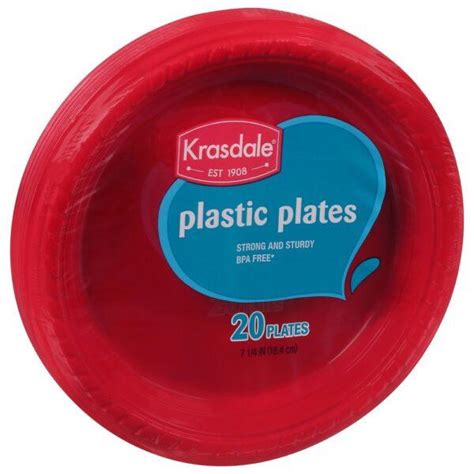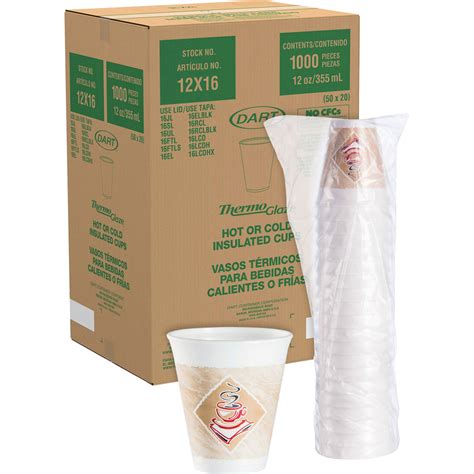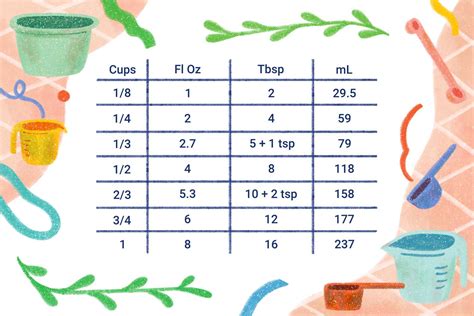Understanding the relationship between cups and fluid ounces (fl oz) is essential in various aspects of daily life, including cooking, nutrition, and science. The conversion between these two units of measurement is crucial for achieving accurate results in recipes, experiments, and other applications. In this article, we will delve into the world of measurement conversions, exploring the intricacies of cups to fl oz conversions, and providing a comprehensive guide on how to perform these conversions with ease.
Introduction to Measurement Conversions

Measurement conversions are an integral part of various fields, including science, engineering, and everyday life. The ability to convert between different units of measurement is vital for ensuring accuracy, consistency, and reliability in various applications. In the context of cooking and nutrition, understanding the relationship between cups and fl oz is particularly important, as it can make a significant difference in the outcome of a recipe. A small mistake in measurement can alter the flavor, texture, and overall quality of a dish, highlighting the need for precise conversions.
Key Points
- 1 cup is equivalent to 8 fluid ounces (fl oz)
- The conversion factor between cups and fl oz is 1:8
- Accurate measurement conversions are crucial in cooking and nutrition
- Understanding the relationship between cups and fl oz can help prevent measurement errors
- Conversion charts and tables can be useful tools for quick reference
Understanding the Conversion Factor
The conversion factor between cups and fl oz is 1:8, meaning that 1 cup is equal to 8 fluid ounces. This conversion factor is based on the US customary system of measurement, which is widely used in the United States. To convert cups to fl oz, simply multiply the number of cups by 8. For example, 2 cups is equal to 2 x 8 = 16 fl oz. Conversely, to convert fl oz to cups, divide the number of fl oz by 8. For instance, 16 fl oz is equal to 16 ÷ 8 = 2 cups.
| Volume in Cups | Equivalent Volume in fl oz |
|---|---|
| 1 cup | 8 fl oz |
| 2 cups | 16 fl oz |
| 3 cups | 24 fl oz |
| 4 cups | 32 fl oz |

Practical Applications of Cups to Fl Oz Conversions

Understanding the relationship between cups and fl oz has numerous practical applications in various fields. In cooking, accurate measurement conversions are crucial for ensuring that recipes turn out as intended. A small error in measurement can result in a dish that is too salty, too sweet, or too bland. In nutrition, understanding the relationship between cups and fl oz is essential for tracking dietary intake and ensuring that individuals meet their daily nutritional needs. Additionally, in science and engineering, accurate measurement conversions are critical for ensuring the accuracy and reliability of experiments and calculations.
Common Challenges in Cups to Fl Oz Conversions
Despite the importance of accurate measurement conversions, many individuals struggle with converting between cups and fl oz. One common challenge is the tendency to round numbers or use approximations instead of exact conversions. This can result in small errors that can add up over time, leading to significant discrepancies in recipes or calculations. Another challenge is the lack of understanding of the conversion factor between cups and fl oz, which can lead to confusion and mistakes.
What is the conversion factor between cups and fl oz?
+The conversion factor between cups and fl oz is 1:8, meaning that 1 cup is equal to 8 fluid ounces.
How do I convert cups to fl oz?
+To convert cups to fl oz, simply multiply the number of cups by 8. For example, 2 cups is equal to 2 x 8 = 16 fl oz.
What are some common challenges in cups to fl oz conversions?
+Common challenges in cups to fl oz conversions include the tendency to round numbers or use approximations instead of exact conversions, and the lack of understanding of the conversion factor between cups and fl oz.
In conclusion, understanding the relationship between cups and fl oz is essential for accurate measurement conversions in various fields, including cooking, nutrition, and science. By mastering the conversion factor between cups and fl oz, individuals can ensure that their recipes turn out as intended, track their dietary intake with accuracy, and perform calculations with confidence. Whether you’re a seasoned chef, a nutritionist, or a scientist, accurate measurement conversions are critical for achieving success in your field. With practice and patience, you can become proficient in converting between cups and fl oz, and unlock a world of possibilities in measurement conversions.
